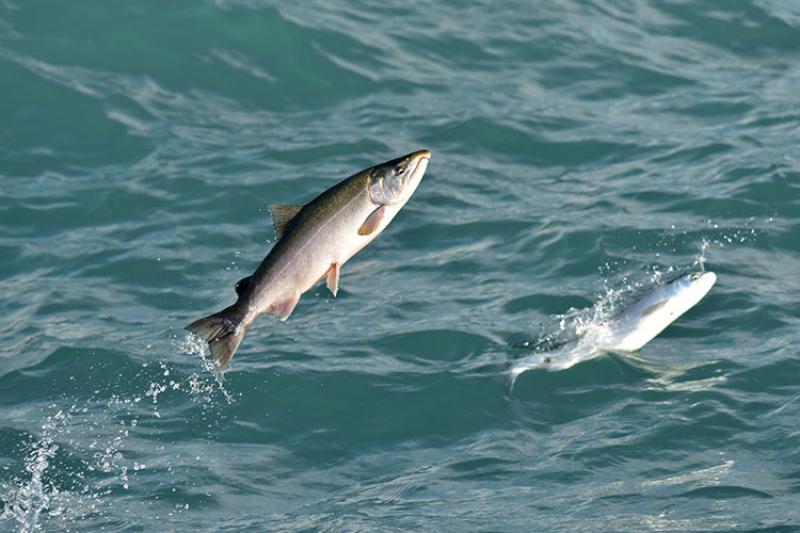NOAA Fisheries says the agency and its fishery management partners reached a major milestone this summer – the rebuilding of a 50th fish stock. The Snohomish coho salmon stock was declared overfished in 2018 and has now rebuilt to its sustainable level.
“A combination of responsive fishery management and habitat restoration helped to rebuild this iconic fish population,” says NOAA Fisheries.
“U.S. commercial and recreational fishing provided 1.7 million jobs and $253 billion in sales in 2020. When we rebuild overfished stocks to sustainable levels, fishermen are able to catch more fish. Sustainable fisheries support thriving fishing communities, healthy marine ecosystems, and a strong economy.”
There are more than 20 different stocks of coho salmon on the West Coast and Alaska. In 2022, commercial landings of coho salmon totaled 13 million pounds and were valued at $16 million.
For decades, the tribes living near the Snohomish River in Northwest Washington have restored degraded habitat in the watershed to improve the chance of survival for returning salmon. Under the 2018 rebuilding plan for Snohomish coho salmon, fishery managers began adjusting catch limits based on how many fish were expected to return each year. They set catch limits lower in years when fish numbers were expected to be down. Together, these rebuilding measures—and habitat restoration efforts—rebuilt Snohomish coho salmon to a sustainable level that will support increased catches for fishermen.
NOAA Fisheries says Snohomish coho salmon is the “latest rebuilding success” in a program that dates back to 2000, when the Atlantic sea scallop was the first stock to be declared rebuilt.
The Magnuson-Stevens Act requires overfished stocks to have rebuilding plans. These plans are designed to increase the stock size to a sustainable level. Rebuilding measures usually include reducing catch levels or closing off areas to fishing, sometimes for several years. These measures require sacrifices from fishermen. While the majority of stocks are rebuilt in 10 years or less, some stocks take longer to rebuild.
Fishery management is a challenging and adaptive process, says the agency. “We have successfully rebuilt stocks over the last 20 years, but challenges continue to increase. For example, climate change and warming ocean temperatures can make it difficult to rebuild stocks to historic levels, especially those better suited to a cold water environment. Some of our stocks are co-managed under international agreements. We have limited impact on fisheries outside of U.S. waters, so we work cooperatively with other countries to rebuild those stocks. In some cases, scientific advances change our understanding of what measures will be effective to rebuild a stock. In other cases, scientists are still searching for reasons stocks haven’t responded to management measures.”
Coho are distributed throughout all anadromous reaches of the Snohomish watershed, including the Snoqualmie and Skykomish River Basins. The majority of Snohomish adult coho return to the river as 3-year-olds between late August and late November with the peak occurring between the last week of September and first week of October.
Spawn timing occurs primarily November through January with access to
spawning reaches being highly dependent on flow conditions. Preferred spawning habitat is small tributaries with extensive associated wetlands. Juveniles rear for over a year in freshwater before out-migrating as smolt from April through June with peak outmigration occurring late April to early May.
Also see:
–CBB, August 27, 2020, ANOTHER DAM BITES THE DUST: REMOVAL OF PILCHUCK RIVER DAM WILL OPEN 37 MILES OF HABITAT FOR SALMON,STEELHEAD, BULL TROUT https://columbiabasinbulletin.org/another-dam-bites-the-dust-removal-of-pilchuck-river-dam-will-open-37-miles-of-habitat-for-salmonsteelhead-bull-trout/

